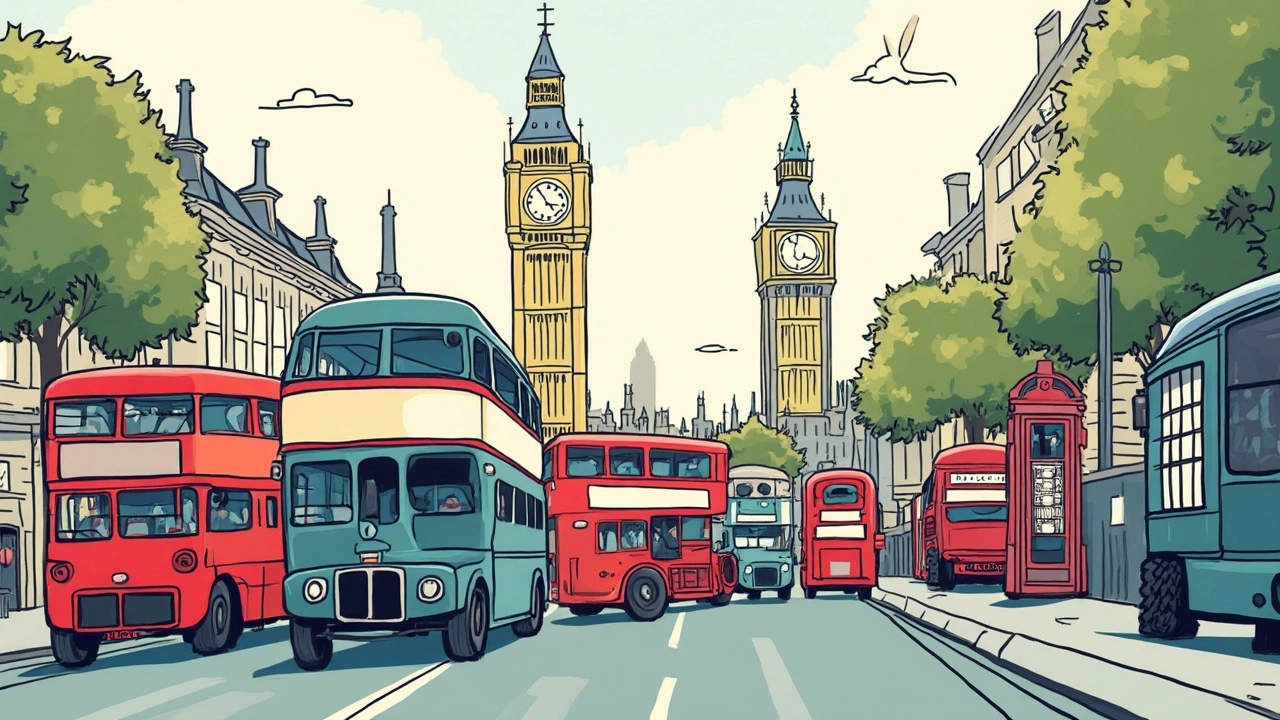UK Terminology: A Practical Guide for HGV Drivers
If you’re training for a Class 1 HGV licence, you’ll soon notice that British road signs and driver talk sound different from what you might have heard elsewhere. Knowing the right words can save you from confusion at the test centre and on the road. Below is a quick rundown of the everyday language you’ll hear behind the wheel in the UK.
Everyday Road Terms
Roundabout – A circular junction where traffic moves clockwise. You enter when there’s a gap, give way to traffic already on the circle, and signal right when you’re about to leave. Most HGV routes include at least a few roundabouts, so practice your positioning and signalling.
Dual carriageway – A road with two separate lanes for each direction, usually marked by a central line. Speed limits are higher here (70 mph for cars, 60 mph for HGVs). Keep an eye on the hard shoulder; it’s there for emergencies, not for cruising.
Slip road – The short road that lets you join or exit a major route. For HGVs, check the length of the slip road before merging; you need enough distance to build speed and fit safely into traffic.
Box junction – A white grid painted on the road. You can’t stop inside it unless your exit is clear. HGVs often block box junctions, so always look ahead and make sure you can move straight through.
Lay‑by – A paved area off the main road for short stops. Use it for quick breaks, not for long rests; the law expects you to keep moving unless you’re genuinely resting or dealing with an issue.
Test‑Specific Vocabulary
Show me, tell me – The practical part of the UK theory test where you answer questions about vehicle safety. Knowing terms like “handbrake” and “mirror adjustment” helps you answer quickly and accurately.
Independence – A section of the practical test where the examiner asks you to drive without directions. You’ll be given a series of road signs to follow. Understanding signs such as “Give Way” and “No Stopping” is crucial.
Fault – Any mistake that could affect safety. Minor faults are OK, but a serious fault (often called a “major fault”) means you fail. For HGVs, common faults include not checking mirrors before lane changes and missing a stop sign.
Reverse park – Part of the practical test where you must pull into a space while reversing. Know the terms “caution”, “stop”, and “handbrake” so you can explain your actions if the examiner asks.
Learning the language isn’t just about passing the test; it’s about staying safe on the job. When you hear a fellow driver say “pull over” or “take the next exit”, you’ll instantly know what they mean and can act without hesitation.
Take a few minutes each day to read road signs, listen to radio traffic reports, and quiz yourself on the words above. The more familiar you are with UK terminology, the smoother your lessons and test will go. Good luck, and drive safe!
- February 13 2025
- 0 Comments
- Rowan Cavendish
What Do Brits Call a Bus? A Peek into HGV Language
Ever wondered if there's more to UK road jargon than meets the ear? When it comes to labeling vehicles, Brits have their quirks, especially with buses. In the world of HGV driving, understanding these terms can be a game-changer. Dive into this guide to explore how Brits refer to buses and pick up some handy tips for HGV training.
- December 6 2024
- 0 Comments
- Rowan Cavendish
Understanding British Diapers: Nappies in HGV Driving Context
In the UK, what Americans commonly refer to as diapers are known as nappies. This article explores the cultural differences in terminology, including an interesting tie-in with HGV driving training. Learn about the history of the term 'nappy', how it influences daily life in British households, and some practical tips for HGV drivers who are parents managing both career and family time. It also delves into the training nuances that can be helpful for those advancing in the HGV field, providing a unique perspective for those balancing personal and professional responsibilities.
- Driving Lessons (41)
- HGV Training (31)
- Driving Test Tips (31)
- Driving Test Booking (26)
- Driving Licence Renewal (23)
- Driving Theory Test (21)
- Pass Plus Course (15)
- Driving Tips (15)
- Intensive Driving Course (15)
- Driver Licensing (14)
Categories
- December 2025 (12)
- November 2025 (13)
- October 2025 (21)
- September 2025 (5)
- August 2025 (8)
- July 2025 (30)
- June 2025 (30)
- May 2025 (30)
- April 2025 (31)
- March 2025 (30)
- February 2025 (28)
- January 2025 (34)
Archives
- driving lessons
- driving test
- driving tips
- intensive driving course
- driving test tips
- HGV training
- learn to drive
- driving theory test
- driver training
- driving test booking
- pass driving test
- HGV driving
- road safety
- driving license renewal
- Virginia driving test
- learner drivers
- safe driving
- Virginia driver's license
- driving license
- learning to drive


